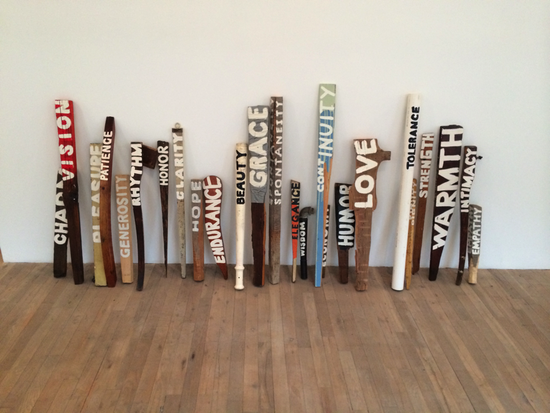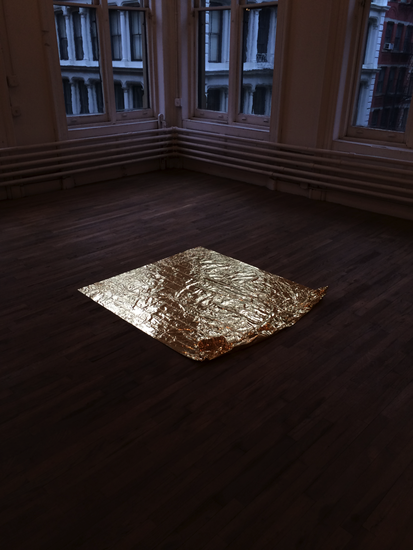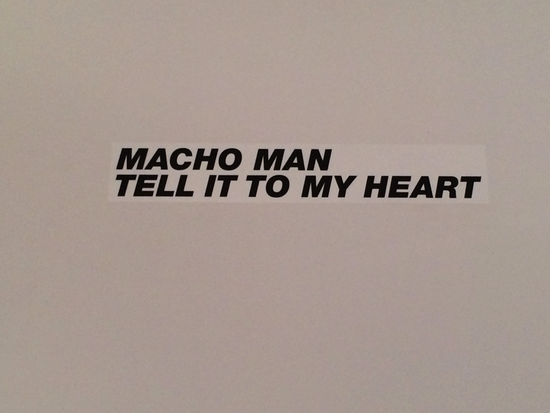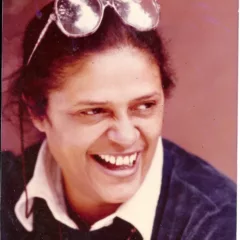[Nate brings a critical eye to a group show curated by Julie Ault from her own collection. — the Artblog editors]
Best known as a pioneer of the artist collective Group Material, artist, curator, writer, and editor Julie Ault has also garnered attention for her impressive art collection. Portions of her substantial collection were recently on view in an impressive show entitled Macho Man, Tell It To My Heart at Artists Space gallery in New York City. Throughout her prolific career, Ault worked closely with the artists whose work is displayed in the show, in both the creation and curation of countless works and exhibitions, many of which were political in nature. Indeed, the central tenet of Ault’s extensive oeuvre seems to be the unification of art and politics.
Personal relationships and visual contradictions
It is important to mention that Ault received many of the works in her collection as gifts from the artists who created them. While all collections are based on some kind of relationship (namely, financial) between artist and collector, this collection is unusual in that it grew out of the unique friendships Ault formed with artists–relationships made all the more meaningful by the political undercurrent uniting the members of Group Material.
The pieces that immediately demand attention upon setting foot in the SoHo gallery embody the relational ethos of the show itself. Mike Glier‘s arresting “Clubs of Virtue” juxtaposes the stark smoothness of the gallery wall with its own irregularities in form, style, and content. The clubs not only rely upon the gallery wall as a means of support and necessary contrast between forms, but also depend on the relationship between the style and content of the clubs themselves to convey meaning to viewers.
Faced with such contrast, we have no choice but to confront the contradictory nature of the objects. To many people, clubs imply violence. Glier’s clubs, however, reject this implication in their display of comforting, hopeful words in bold and bright letters. The white letters emblazoned on the wooden objects cry out against their dark associations with words such as “GRACE,” “LOVE,” and “WARMTH,” all capitalized. While it is certainly easy to view this piece as a witty commentary on the simplistic duality of good and evil, it is just as tempting to interpret “Clubs of Virtue” as a banal, slightly contrived political commentary.

Moving on, the captivating “Gold Field” by Roni Horn, aptly placed in the sole windowed corner of the gallery, affects viewers just as much as it depends upon its environment: a technique reminiscent of Minimalist art. The sculpture, fashioned out of a sheet of pure gold foil, resembles a rug in its wrinkled presentation on the floor of the gallery. The effect of this placement is twofold; it renders the work of art tangible by displacing it from the depersonalized context of traditional, guarded display methods, and it relegates a delicate sheet of what is considered a precious commodity to the status of a carpet–a wrinkled, lifeless mass over which people may walk freely, turning the mystical, sacred nature of the material into a devalued, everyday object.

A disappointing centerpiece
The central work of Macho Man, Tell It To My Heart is Steven Evans’ eponymous 1989 piece. The artwork, consisting of capitalized vinyl letters and paint, while modest in size, pops out at viewers. It is at once a slyly sarcastic play on cultural machismo, and a fervent cry for honest representation in a world of contrived exaggeration. Unfortunately, Evans’ work falls prey to the cultural trapping that it attempts to critique through mockery; the satirization of overzealous masculinity has been so frequently attempted that banality is inevitable. Evans’ piece is no exception.

Macho Man, Tell It To My Heart is a sprawling show that is as multifaceted as the artists whose work it contains. With 200 works by 40 individuals, curated by Julie Ault and seven others, it is not a show for those looking for a leisurely, lighthearted art experience. For the rest of us, many redeeming aspects of the show make the visit to Artists Space memorable: the expert curation (for example, the salon-style hanging of artworks), powerful political implications, and challenging aesthetics ensure that many of the works live beyond the context of New York City in the 1980s and 1990s. These aspects make the show worth a trip downtown if you happen to be in the NYC area.
Macho Man, Tell It To My Heart is on view at Artists Space gallery through February 23, 2014.









